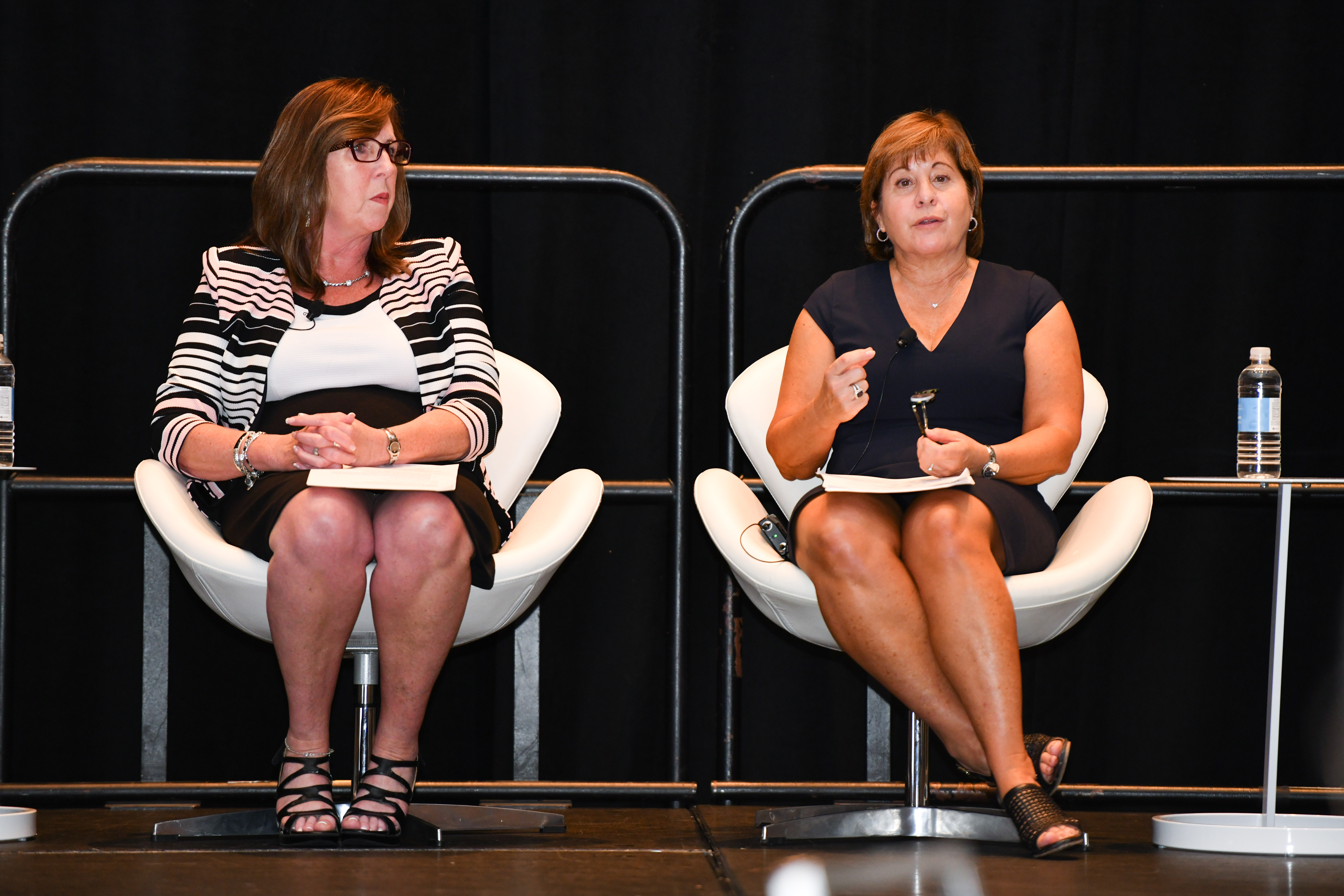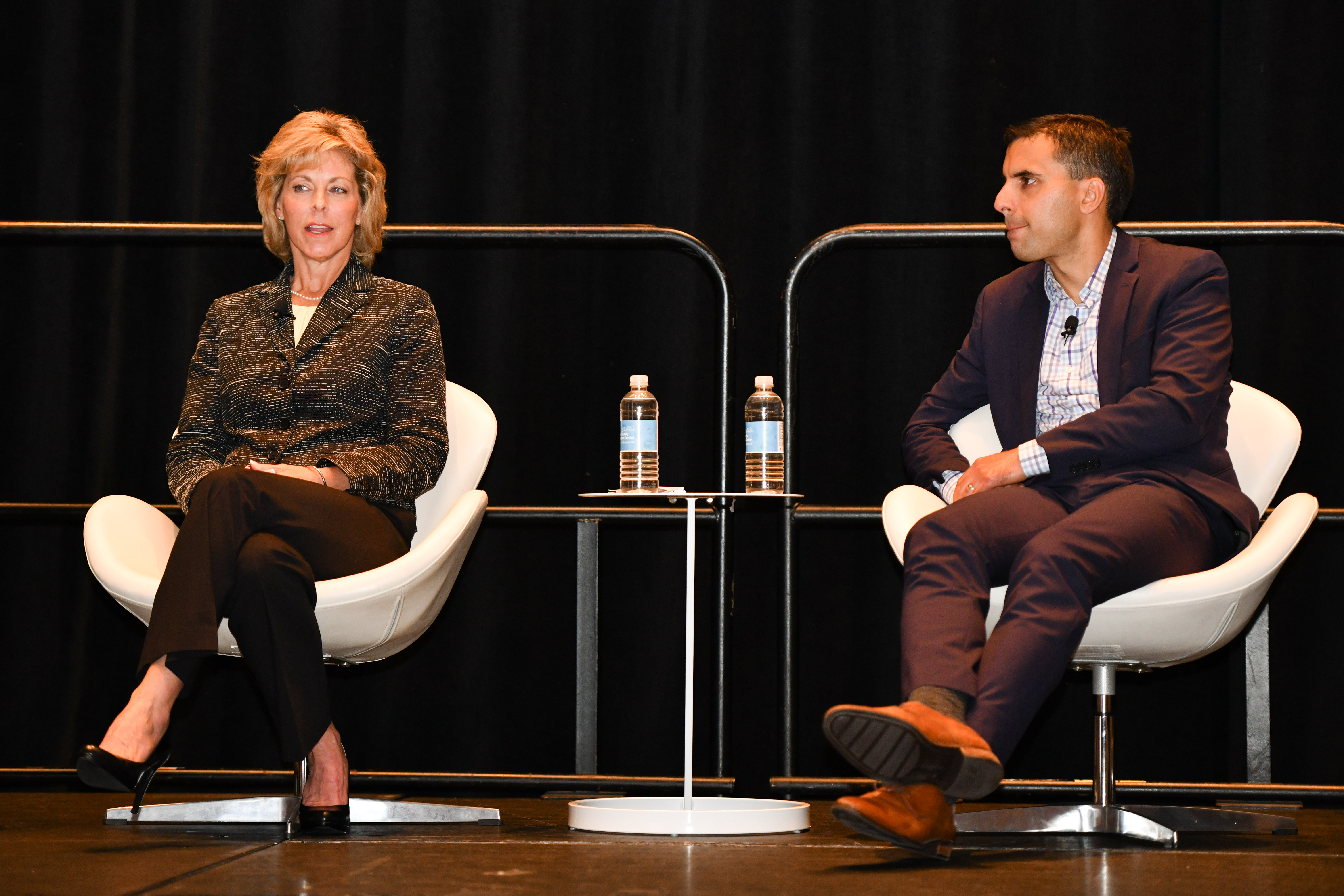How providers should adapt to the demands of a consumer-driven healthcare system
The Patient Accessibility, Engagement and Experience cohort at HFMA’s 2019 Annual Conference yielded 10 key takeaways.
- The urgency to meet the challenge of improving the patient experience is growing throughout the healthcare industry.
- A worthwhile step for providers is to undertake a journey-mapping process to gauge where improvements are needed in the patient experience.
- An as-yet unrealized milestone in improving the patient experience is the ability to provide personalized out-of-pocket costs for services.
- Some providers are opening innovation centers to counter the momentum of industry disrupters such as Apple, Amazon and CVS, which specialize in catering to customers.
As patients and employers bear more responsibility for the costs of healthcare, they can be expected to act more like consumers do when interacting with other industries: actively searching out high-value services instead of simply seeking care where their physician or health plan directs them.
For providers, adjusting to this emerging consumer mindset requires a new approach to their core operations. In all processes, from marketing to revenue cycle to clinical care, they must consider best practices for attracting patients and earning their loyalty.
Strategies for acclimating to a consumer-centric system were discussed in depth during a cohort of three sessions at HFMA’s 2019 Annual Conference. Here are 10 key takeaways from the cohort, which was sponsored by Cedar.
1. The end-to-end consumer experience should be prioritized
“See me, hear me, know me” is the demand from patients today. Providers should look to revamp revenue cycle processes to provide individualized, personalized healthcare financial experiences. Journey-mapping patients’ experiences can provide insights as to where improvements are needed. Challenging assumptions is crucial. For example, it turns out that many seniors prefer to make payments digitally.
2. Patients are the new payer, and that has ramifications for the industry
With patients facing higher deductibles, providers should prioritize creating a positive and easy payment experience. They should be responsive to patient needs by offering options for making payments. To better meet patient expectations, patient navigators should be equipped with information on patients’ financial profiles and payment preferences.
3. Providers should digitalize and personalize the patient experience
Patients tend to willingly pay bills if the bills are comprehensible and making payments is easy and convenient. Providers can remove barriers to payment by creating a digital experience and offering real-time availability for patients to ask questions, such as via live chats and 24-hour customer service. A range of options, from old-school mail to digital, should be available for making payments.
“We embarked on a digital experience for patients to increase patient satisfaction with the billing experience,” said Vicki McKinney, COO and chief revenue officer, WESTMED Practice Partners, Purchase, N.Y. “However, we found an added benefit was a significant decrease in time to collect and self-pay [accounts receivable]. Patients are consumers, and they’re used to the digital world. Healthcare has to catch up.”

4. Moving to a digital payment experience requires accounting for various factors
Size and resources may dictate the degree to which a provider can offer a digital experience. Certain aspects can be outsourced — for example, a physician practice may prefer to handle its own patient calls while outsourcing a chat feature. Providers can consider moving to a digital experience in phases, starting with patient payments before incorporating registration, scheduling and more.
5. Providers should be mindful of the costs borne by patients
“The healthcare industry needs to take the next step and show patients where they can get care for less,” said David Kerwar, chief product officer and head of digital consumer innovations with Mount Sinai Health System, New York City.
By using analytics to predict order sets and care paths, providers can work toward establishing a true out-of-pocket estimate for a patient’s care plan. When referring patients for services, providers can use data and artificial intelligence to show patients appropriate access points with price comparisons.
6. A major reshaping of the patient experience is at hand
New entrants into the healthcare space, such as Amazon and CVS, are drawing on their experience with consumer-centric business models. An example of a game-changer is Apple’s use of Fast Healthcare Interoperability Resources (FHIR) transactions to allow patients to integrate and track their health information across providers.
7. Providers are branching out in efforts to keep up with disruption
Some providers are developing innovation centers as testing grounds for new strategies and tactics. Houston Methodist’s Center for Innovation has representation across the organization to bring diverse perspectives on improving the patient experience, said Michelle Stansbury, vice president of IT innovation. Mount Sinai put together a team from outside of healthcare to look at using journey mapping and technology to pinpoint hot-button consumer issues, Kerwar added.

8. Patient loyalty is key to population health management and an organization’s financial sustainability
For patients, the patient experience begins as soon as they think they need healthcare. “The healthcare experience predicts brand loyalty,” said Chrissy Daniels, partner in the Strategic Consulting Division of Press Ganey.
Three factors in the patient experience predict patient loyalty, Daniels said:
- The patient’s confidence in the provider
- The cohesiveness of the care team
- The responsiveness of the care team
9. Social media and reputation management are vital to patient engagement
A provider’s ability to attract patients and secure their loyalty — and to grow its brand in the community — may hinge in large part on social-media platforms. Recent data shows patients predominantly choose physicians after evaluating online reviews and ratings. Such reviews have five times the impact of traditional marketing, Daniels said. Providers thus should have processes for responding to patients on social platforms while understanding that the greater visibility offered by such platforms is driving urgency around the consumer experience.
10. The shift to a consumer-oriented experience requires expertise in change management
Healthcare leaders are shifting to a culture of innovation, welcoming new ideas. “We believe innovation is a responsibility of all our employees,” Stansbury said. “Our approach is to succeed fast or fail fast. Within a 60-day time period we evaluate if an initiative is a success, and if it isn’t, we move on.”
***
From our sponsor: The patient experience gets measured beyond clinical care. Here’s how to improve it.
Florian Otto, MD, PhD, co-founder and CEO of Cedar, provided insight on the patient experience as a lead-in to the Patient Accessibility, Engagement and Experience cohort at HFMA’s 2019 Annual Conference.
On the financial benefits of improving the patient billing experience:
Margins of hospitals are very low, around 2% nationally. Bad debt rates are 4% to 7% of net patient service revenue. So if you increase the collection rate by just 10%, that adds another 40 to 60 basis points directly to the bottom line, given that it’s service already rendered. With a relatively small collection-rate improvement, the profit margin now averages 2.4% to 2.7% — a 30% lift.
On key strategies for becoming more consumer-friendly:
We recommend three strategies to make this transformation for provider organizations.
1. Prioritize the end-to-end consumer experience. To do this, map out each touch point of the journey through the eyes of the patient. Get patient feedback and put yourself in their shoes. See what it’s like to book an appointment or to check in. Can you put down your insurance information quickly? Can you get an accurate estimate?
Then, repeat the exercise through the hospital inpatient or outpatient experience, up through checkout. How is the billing experience? Do you need to call different call centers to have two different questions from two different bills answered, or is there one single point of contact?
Once you have mapped all the pain points along the journey, prioritize the most critical issues and develop improvement plans. There will likely be some eye-opening findings and trends that you may not have expected. It’s a critical exercise that helps keep you connected to your primary stakeholder — the patient.
2. Digitalize and personalize the journey when possible. With digitalization, you get much more immediate feedback on what patients react to. Why, for example, is Starbucks so accurate in sending you offers? It’s because they know your preferences. We need to do the same in healthcare billing.
We’ve seen that for patients who engage in digital technology, there’s a 40% increase in payment rates versus those who aren’t digitally enrolled. In the beginning, we were a little bit worried that only young people use technology, which has been proven false. Digitization allows for better personalization, which drastically improves engagement.
3. Offer convenient support for patients. If you have a question for Airbnb or Uber, there is a 24-7 automated chat that probably responds to 80% of customer questions. Healthcare needs the same standard. Studies confirm that patients want to pay their bills. We just need to answer their questions and remove friction.
That said, technology is not always enough. Some patients want to talk to a human, some still want to send an email. We need to give patients convenient options, and we need to have one single point of contact.
By improving the end-to-end patient journey, there’s a positive impact on collection rates, time to collect, cost to collect and patient satisfaction.
***
The Patient Accessibility, Engagement and Experience cohort included the following sessions and speakers
The New Reality: Challenges and Opportunities for Patient Experience
David Kerwar, chief product officer and head of consumer digital innovations, Mount Sinai Health System, New York City
Joel Perlman, senior adviser, Montefiore Medicine, New York City
Michelle Stansbury, vice president of IT innovation, Houston Methodist
Florian Otto, MD, PhD, co-founder and CEO, Cedar
Personalizing the Patient Financial Experience: Thinking Like a Consumer
Sue Gillies, vice president, revenue cycle management, Crystal Run Healthcare, Middletown, N.Y.
Vicki McKinney, COO and chief revenue officer, WESTMED Practice Partners, Purchase, N.Y.
Raj Mehra, head of strategy and operations, Cedar
Transparency Is a Team Sport
Chrissy Daniels, partner, Strategic Consulting Division, Press Ganey
Niren Gandra, head of partnerships, Cedar






